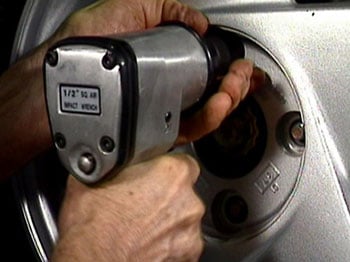What’s The Difference Between PSI And CFM?
PSI and CFM are performance specifications for air compressors and air-powered machinery, which indicate the maximum air volume and pressure produced by an air compressor to power air tools.
PSI and CFM are both units of measurement, but they measure different things. PSI measures air pressure, while CFM measures air volume. Together, PSI and CFM determine how much air flows and at what force. Keep reading to better understand these two metrics and how they relate to one another.
What Does PSI Mean?
The initials PSI stand for Pounds per Square Inch. PSI measures how many pounds of pressure (force) are in an area, specifically one square inch. The force of the air is what gives compressed air its power. For example, an air compressor’s output rated for 100 psi* would mean that 100 pounds of pressure is delivered per square inch.
*PSI is typically written in air compressor specs in lowercase letters, psi.
What Does CFM Mean?
CFM is an acronym for Cubic Feet per Minute which measures the volume of air, in cubic feet, for each minute it moves. In the case of an air compressor, CFM indicates how much air can move per minute. For example, an air compressor’s output rated for 30 CFM means 30 cubic feet of air flow per minute.
How Do CFM and PSI Relate?
CFM and PSI relate to each other in an important way because both CFM and PSI must be sufficient for an air tool to operate and perform optimally.
Let’s look at a real-life example to help understand how CFM and PSI relate:
Imagine you have a garden hose, and you turn it on. Water will flow out, and it might reach a few feet past the end of the hose, perfect for filling up your bucket or watering can.
But if you take the garden hose and place your thumb on the end, restricting the space at the end of the hose to create less room for the water to flow out, the water will shoot out with much more pressure than before. Even though the hose allows the same amount of water to escape, the extra pressure allows the water to travel faster and further—perfect for a water fight!

Hopefully, this hose example is relatable. Even though the example uses water to describe the relationship between CFM and PSI, the concept is the same with air.
Consider this second real-life air example:
There is a tunnel with wind blowing through it, and the tunnel gets smaller and smaller. As the wind blows into the tunnel, it travels through the shrinking space, and starts to feel stronger and stronger. Even though the volume of air (CFM) remains the same throughout the tunnel, the air is being squeezed into a tighter space, increasing the pressure (PSI).
Both examples above share how PSI relates to CFM. When using air compressors, it’s crucial to have a sufficient CFM (volume of air) to power air tools and enough PSI (pressure) to give the air power.
What Size Air Compressor Do I Need To Run My Air Tools?
 Now that you understand the difference between PSI and CFM, you might be wondering how to be sure you have the right air compressor to run your air tools.
Now that you understand the difference between PSI and CFM, you might be wondering how to be sure you have the right air compressor to run your air tools.
The easiest way to do this is to check the CFM and PSI air requirements of your air tools and then ensure the air compressor you choose meets those requirements.
However, there’s more to consider than simply matching the CFM and PSI of your tools to your air compressor. Whether you use an air receiver tank, have a rotary screw or reciprocating air compressor, and the details of your application also impact your CFM and PSI needs.
To continue your research into PSI and CFM, check out these helpful articles:
What Size Air Compressor Do I Need For Air Tools
How To Choose A Mobile Air Compressor For Your Work
